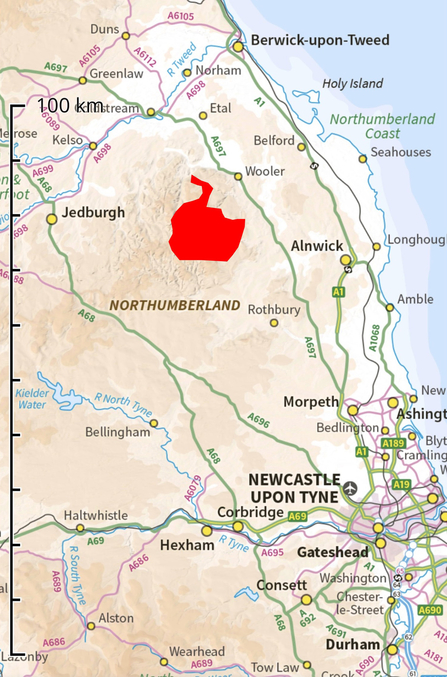What is Granite?
It’s a very hard rock that was once molten magma deep underground and then cooled and crystallised.
How do I recognize it?
It is a rock with lots of quite big minerals all intermeshed. The minerals are most commonly white and black but can often include pink ones too. It is very hard and usually resists erosion and forms hills and mountains.

Where do I find it?
We only have one granite that reaches the surface in Northumberland and that is the Cheviot granite that forms the mountains of the Cheviot range and was later exposed by erosion of the overlying rocks. But there is another granite that is found deep underground in the very south of the county and called the Northern Pennine or Weardale granite. However, you may occasionally find boulders and pebbles of granite from south west Scotland; they have been carried here by ice sheets during the last ice age.
Great Standrop tor
How was it made?
Granite was once a molten rock in a very large underground chamber. It is a rock with a lot of silica and is mostly made of the minerals quartz, feldspar and mica. It cools very slowly allowing the mineral crystals to grow.
What does a granite landscape look like?
Because they are hard they usually form higher ground. They are also impermeable so they are usually ill-drained and boggy with poor soils. Sometimes the weathered top of the granite sticks out of the landscape forming tors – like those at Langley and Housey crags.
Which plants like granite?
Having lots of silica, and not many minerals yielding plant foods, granite produces infertile, acidic soils, typically with heather and coarse grasses like moor mat grass. However, with heavy rainfall on the high ground much of our granite is covered by waterlogged soils with a blanket of peat, as on The Cheviot - as Pennine Way walkers well know.
What use is it?
Although the Cheviot granite is not quarried, other granites like the one at Shap in Cumbria, are used a lot, largely because they are hard and colourful. You will see granite used as roadstone, as kerb-stones, monuments in churches, shop and building facias, and of course our kitchen worksurfaces!

